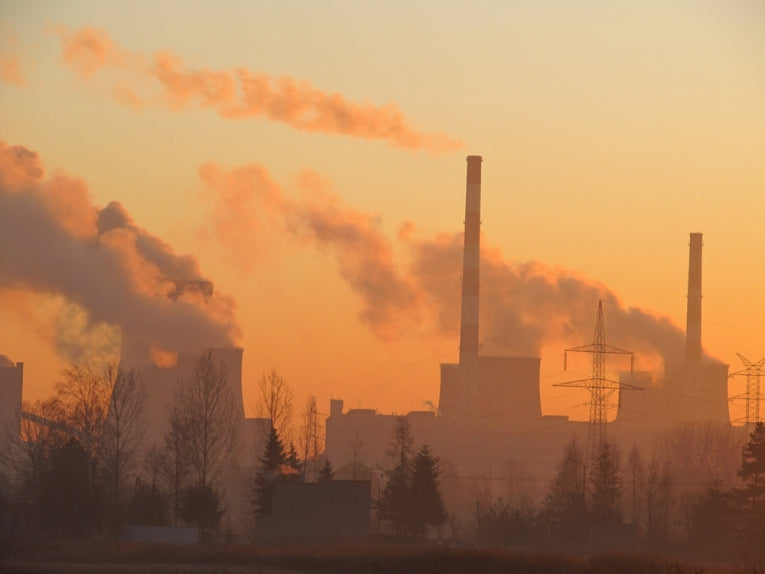Cooling coal plant emissions by using refrigeration could cut dangerous chemicals including carbon emissions by more than 90% say physicists.
The measure would reduce efficiency by a quarter but would provide significant climate and health benefits, says the University of Oregon team.
The savings were calculated using a simple maths formula prepared on an electronic spreadsheet and have been published in the journal Physical Review E.
University of Oregon physicist Russell J. Donnelly says, "The cryogenic treatment of flue gasses from pulverized coal plant is possible, and I think affordable, especially with respect to the total societal costs of burning coal."
In a separate, unpublished and early economic analysis, the scientists suggest an "energy penalty" would raise electricity costs by a quarter but will also produce benefits through subsequent reductions of health-care and climate-change costs normally linked to burning coal.
An energy penalty is the reduction of electricity available to consumers if plants used the same amounts of coal to produce the same electrical output at the same time as using a cryogenic clean-up.
Russell Donnelly says, "In the U.S., we have about 1,400 electric-generating unit powered by coal, operated at about 600 power plants."
The energy is sold at about 5.6 cents per kilowatt-hour, according to 2006 Congressional Budget Office figures. They say the estimated health costs of burning coal in the U.S. range from $150 billion-$380 billion, including 18,000-46,000 premature deaths, 540,000 asthma attacks, 13,000 emergency room visits and two million missed work or school days every year.
Russell Donnelly and UO research assistant Robert E. Hershberger, who co-authored the paper, estimate that introducing large-scale cryogenic systems into coal-fired plants would cut costs to society by 38% through large reductions of associated health-care and climate-change costs. Front-end health-care costs involved in coal extraction through mining are eliminated.
The cryogenic concept is not a new one. Donnelly experimented with it in the 1960s using a paper mill in Springfield, Oregon, to remove odour-causing gases in the area around the plant using cryogenics. The National Science Foundation later financed a major study to capture sulphur dioxide emissions - that contribute to acid rain - from coal burning plants. The grant included an engineering study from the Bechtel Corporation of San Francisco.
The Bechtel study found the cryogenic process would work well, but warned large quantities of carbon dioxide also would be condensed. This raised no worries in 1978.
Mr Donnelly says, "Today we recognize that carbon dioxide emissions are a leading contributor to climate-warming factors attributed to humans."
This was followed by a two-year project to recheck and update his thermodynamic calculations and produce "a spreadsheet-accessible" formula that could potentially be used by industry.
While the required cooling machinery would be large - possibly as big as a football stadium - the cost of construction or retrofitting could be similar to existing systems that include scrubbers, which would not be required.
The new journal article does not grapple with the costs of construction or the disposal of captured pollutants that would depend on engineering and geological considerations.
The Physical Review E paper explains that carbon dioxide would be captured in its solid phase, then heated and compressed into a gas that can be moved through a pipeline at near ambient temperatures to dedicated storage facilities. Other chemicals, including sulphur dioxide, some nitrogen oxides and mercury would also be condensed and safely removed from the exhaust stream.
In December 2011, the U.S. Environmental Protection Agency issued new mercury and air toxic standards and called for the trapping of 41% of sulphur dioxide and 90% of mercury emissions.
A cryogenic system would do better, capturing at least 98% of sulphur dioxide, virtually 100% of mercury and 90% of carbon dioxide, the team believes.
Kimberly Andrews Espy, University of Oregon vice-president for research and innovation, says, "This forward-thinking formula and the preliminary analysis by these researchers offer some exciting possibilities for the electric power industry that could ultimately benefit human health and the environment.
"Scientists at the University of Oregon are continuing to develop new ideas and advanced materials to foster a sustainable future for our planet and its people."
The research was financed by the U.S. Department of Energy. Other co-authors were Charles E. Swanson, who achieved his doctorate in physics from the Oregon University and served as postdoctoral researcher under Mr Donnelly; John W. Elzey, an ex-research associate in the Cryogenic Helium Turbulence Lab and who is currently a scientist at GoNano Technologies in Moscow, Idaho; and John Pfotenhauer, who gained his doctorate at the University of Oregon and now is in the mechanical engineering department at the University of Wisconsin, Madison.
href="https://earthtimes.org/environment/pollution/index.html">Pollution /














